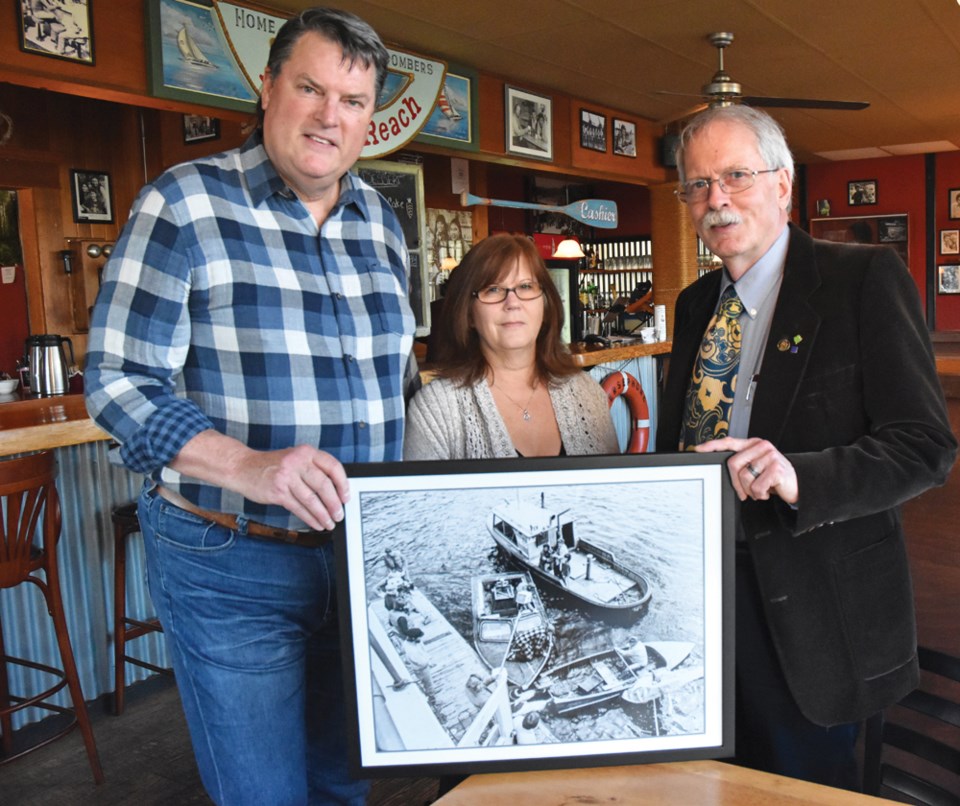Gibsons restaurant MollyтАЩs Reach is a living museum dedicated to The Beachcombers, the hit CBC television series that aired for nearly two decades starting in the 1970s. A new photograph of one of its minor characters has been added to the collection.
Hanging on one of its walls is a black and white still from an episode starring Frank Wade, known to fans as Colonel Spranklin. WadeтАЩs grandson John Wade, who moved to Gibsons in June, donated the photograph. тАЬYou come into this place, itтАЩs a museum, itтАЩs part of Canadian history,тАЭ Wade said.
Wade presented the photograph with Coun. David Croal to restaurant owner Diane Twohig on Nov. 16. Croal worked as an art director on the show, starting in 1979. тАЬSadly, some of the best characters had the smallest parts,тАЭ Croal said.
Frank Wade was in his 70s when he started with The Beachcombers and performed in 23 episodes from 1972 until he retired in 1979. тАЬHe loved it, because it was his last little bit of fame,тАЭ said Wade of his grandfatherтАЩs role. тАЬHe would be up to his 80s filming.тАЭ
Spranklin lived on Keats Island, and was a тАЬcrusty old army colonel,тАЭ according to Wade. Frank Wade began acting in vaudeville in 1922 and worked as a freelance actor in radio dramas and Theatre Under the Stars in the 1960s. He was also a dog expert and appeared on The Bob Switzer Show with a poem about a different breed each week.
Twohig, who has owned MollyтАЩs Reach since 2011, said donations of photographs or other memorabilia happen fairly regularly and are welcome. тАЬItтАЩs always nice to have more pictures тАУ we have so many people coming in, so many fans still, so the more the better,тАЭ she said.
For Wade, putting the photo into the public realm also serves another purpose. тАЬItтАЩs his legacy, really,тАЭ said Wade of the donation. тАЬIтАЩm keeping whatever legacy that he gave here, keeping it alive for future generations.тАЭ
Listen to an interview with Croal and Wade on


